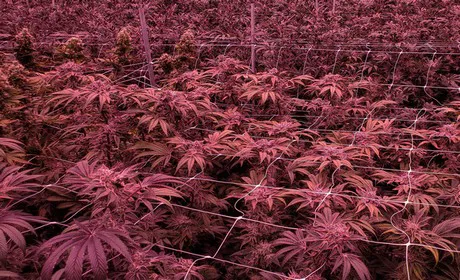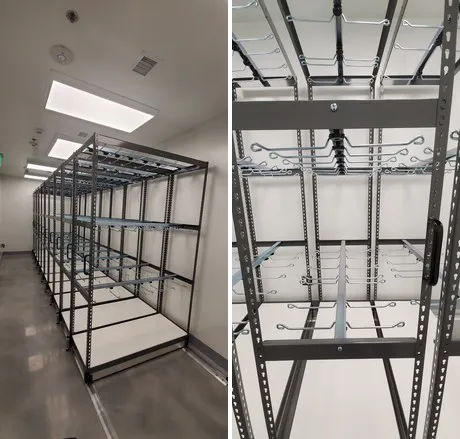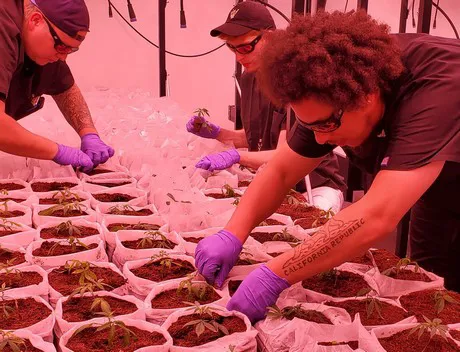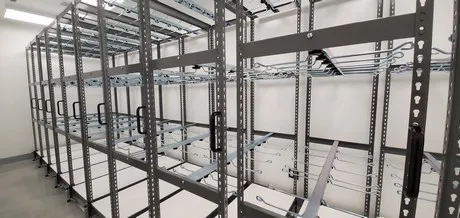There are many ways to grow cannabis at scale: indoors, in greenhouses, or outdoors. Generally speaking, it is common knowledge that the highest quality can be achieved indoors, then within greenhouses, and finally outdoors. However, there is a fourth option that combines the best of indoor and greenhouse growing. “New Genetics is a cannabis cultivation facility based in Michigan, and we grow in a 400,000 sq. ft. hybrid facility,” Karim Sanonevic, Director of Cultivation at New Genetics, explains. “When growing indoors, you cannot rely on sunlight. Therefore, we designed an indoor facility with a glass roof. On top of sunlight, we also utilize LED supplemental lighting.”

Karim further explains that New Genetics grow vertically indoors. “We start off the plant on a double-tier rack system, and then for blooming and flowering we put plants in the greenhouse.”
Cannabis growing and winemaking
According to Karim, growing cannabis is very similar to winemaking. “Winemaking is 50% growing, and 50% fermenting,” he points out. “Cannabis works similarly: you can be the best grower in the world, but if you don’t take the right steps for curing, you will get a very bad product.” Thus, Karim continues to say that they carry out a proper flush of the plants before the harvest, to get rid of any residual nutrients, and they hand trim it. “But before that, we hang the plants to dry on vertical drying racks made by Pipp Horticulture.”

The importance of the drying and curing process is paramount, as any misstep during this phase could lead to potentially disastrous consequences. “The drying capacity ultimately dictates how much you can harvest,” Karim pointed out. “Therefore, we had to maximize the efficiency of the entire operation. We were space confined, and we needed a system that met our needs.”
The benefits of verticality
When there is not enough space in a growing facility, going vertical is a great option, especially when the facility has a very high ceiling. If left empty, that would be less space for harvesting – or less operating space, generally speaking – which means less revenue and wasted money. “Therefore, we chose Pipp for our vertical drying racks,” says Karim. “We selected them because of their reputation around the industry. When we were looking at drying rack systems, we were really impressed by the fact that Pipp’s solution had food-grade components: which means you don’t have any oxidation, no heavy metal leaking, and so on. On top of that, the engineering is one of the best we have ever seen: it is a breeze to push these racks. But the truly impressive thing was the competitive pricing, compared to the quality of the product you get. On our unit size, we can fit about 40-60 plants depending on the variety being grown. We tend to cultivate 150-190cm tall plants."

Despite New Genetics placing its order with Pipp during the toughest times of the pandemic and the lockdown, the company was able to fulfil the order. “Pipp is one of the best vendors we have worked with.”
The importance of the drying space is paramount; as Karim pointed out, that eventually dictates how much a grower can harvest. “It is crucial to have an accurate proportion and ration all over the grow,” Karim observes. “Many facilities look to maximize the canopy space, which makes sense on the one hand; yet, on the other hand, you cannot afford to overlook the post-harvest processes, which ultimately influence the harvest itself. That is why I would advise new growers to give to the drying and curing process the attention they deserve, and to plan and design for enough drying capacity. If that is not well thought out, growers might end up drying their flowers in rooms that are not designed for that, which ultimately affects the quality of the product, to the point that unpleasant decisions need to be made.”

Considering the benefits that vertical cultivation has brought to New Genetics, Karim points out that, if there are budget and space constraints, then vertical cultivation is the right approach. “Nobody knows how the cannabis industry will actually be in a few years from now,” he says. “There are a lot of proposed facilities for international export and import. Given the current less availability of capital, those growers with space and budget constraints should bring more verticality in their operation.”
For more information:
Pipp Horticulture
2966 Wilson Drive NW
Walker, Michigan 49534
P: 616-988-4044
F: 616-988-4045
[email protected]
pipphorticulture.com 
New Genetics
10310 Harvest Park, Dimondale, MI 48821
(517)885-3278
[email protected]
newgeneticsus.com
